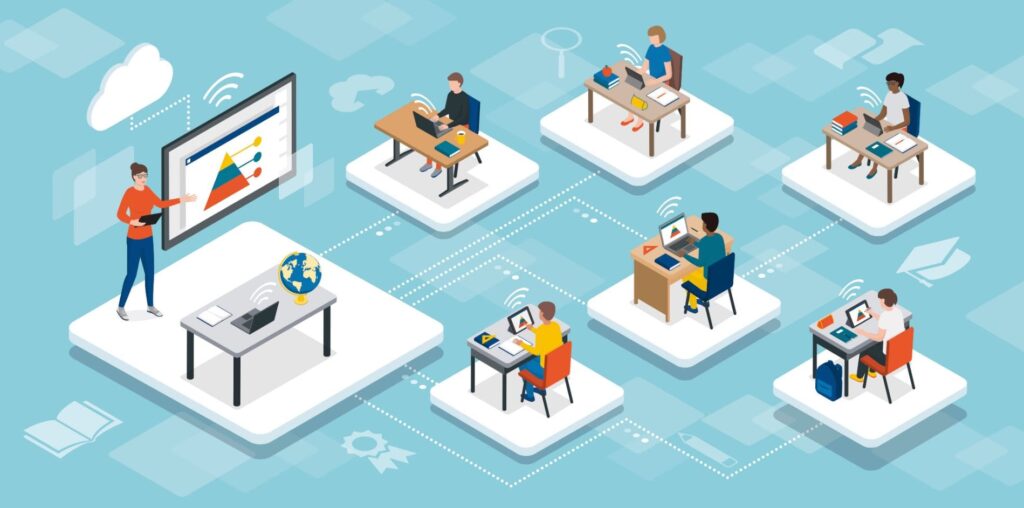Introduction
Digital learning is a product of technological advancements which encompass the use of technology in education. Technology improvements impacted the education sector greatly due to the development of collaboration and discussion tools that aid learners and tutors to help one another and communicate. In this respect, digital learning opportunities include easy access to materials and personalized education, while the challenge involves limited instructor physical contact.
Easy Access to Learning Materials
One of the great opportunities of digital learning is that it gives learners full-time access to resources easily. Haleem et al. (2022) present that technology companies are providing digital solutions to educational institutions and predict that advancements will ensure the availability of online learning resources in regional languages (p. 281). In this case, digital learning gives learners flexibility over where and when they study. As a result, it enables students to control their studying period. Digital learning technologies can ensure educational materials are available for learners at all times. In this respect, digital learning has the opportunity to ensure students access resources quickly. Additional reading materials provided through digital learning platforms allow learners to maximize their studying since they will have adequate materials for their challenging subjects and areas. Therefore, digital learning has the opportunity to ensure students acquire extra information for their study easily.

Personalized Education
Besides, digital learning provides a chance for personalized learning, considering individuals have particular studying methods and techniques suiting them. Technological enterprises are revolutionizing classrooms through innovations that personalize learning to impact teaching practices (Van Schoors et al. 2023, p. 315). Digital learning technology inventions are geared towards personalizing studying to enhance performance. Hence, digital learning is helping tutors and students to understand effective approaches suitable for them. Digital personalized learning is expanding because it can leverage learners’ performances and motivation while supporting tutors interacting with extensive heterogeneous class groups (Van Schoors et al. 2023, p.315). Therefore, digital learning has made learning and teaching more effective by promoting customization. In this respect, students have to adopt efficient learning approaches and paces. As a result, digital learning technology’s capability of personalizing education will guarantee more understanding of classroom content among students.
Limited Physical Tutor-Student Contact
However, digital learning inhibits direct interactions between learners and tutors, which might contribute to reduced motivation and understanding. Online teaching has several challenges, including restricted interaction changes affecting student-teacher relationships (Vagos & Carvalhais 2022, p. 2). In this case, digital learning impact students’ oversight since learners study in different environments and have contradicting understanding capability. In this respect, digital learning contributes to disengagement in studies affecting students, especially those performing poorly. It encourages students to study independently, which demotivates students who are reluctant in education to engage in learning. Interpersonal interactions are significant in teaching particular skills and concepts. Besides, direct interactions ensure learners have adequate discussion opportunities in challenging areas. Therefore, digital learning hinders physical contact between teachers and learners, affecting students’ perception of education.
Conclusion
Although digital learning inhibits physical contact, it provides a chance to personalize education and easily access study materials. Digital learning technologies ensure learners have an extensive database for accessing education resources easily and at any time. Besides, digital learning promotes personalization, allowing students and teachers to utilize their effective approaches. Nevertheless, digital learning limits physical interactions, impacting students who are reluctant to receive education.
Reference List
Haleem, A, Javaid, M, Qadri, MA & Suman, R 2022, ‘Understanding the role of digital technologies in education: A review’, Sustainable Operations and Computers, vol. 3, pp. 275-285, viewed 19 July 2023, DOI: 10.1016/j.susoc.2022.05.004.
Vagos, P & Carvalhais, L 2022, ‘Online versus classroom teaching: Impact on teacher and student relationship quality and quality of life’, Frontiers in Psychology, vol. 13, pp. 1-7, viewed 19 July 2023, DOI: 10.3389/fpsyg.2022.828774.
Van Schoors, R, Elen, J, Raes, A, Vanbecelaere, S & Depaepe, F 2023, ‘The charm or chasm of digital personalized learning in education: Teachers’ reported use, perceptions and expectations’, TechTrends, vol. 67, no. 2, pp. 315-330, viewed 19 July 2023, DOI: 10.1007/s11528-022-00802-0.


